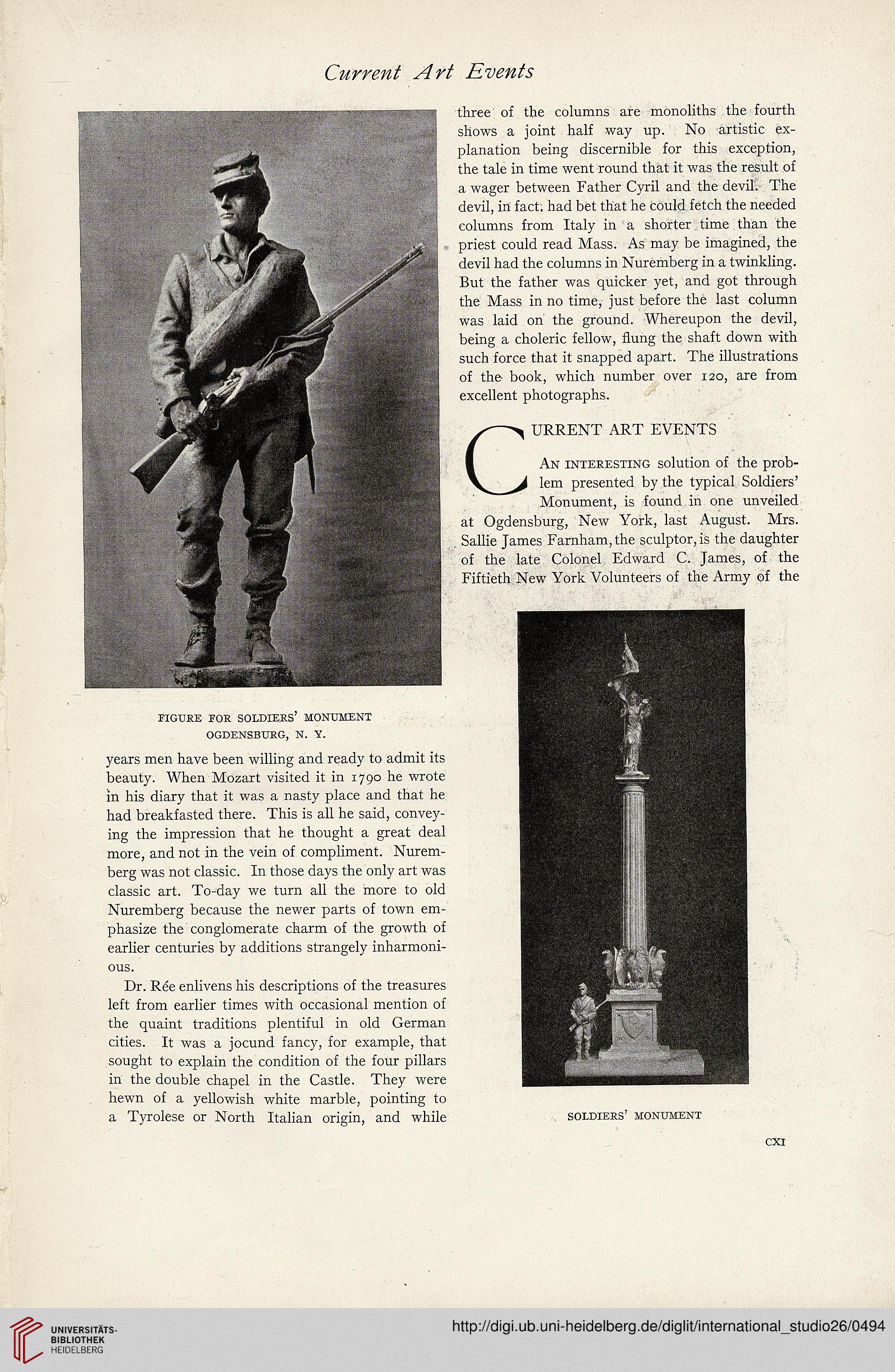three of the columns are monoliths the fourth
shows a joint half way up. No artistic ex-
planation being discernible for this exception,
the tale in time went round that it was the result of
a wager between Father Cyril and the devil. The
devil, in fact, had bet that he could fetch the needed
columns from Italy in a shorter time than the
priest could read Mass. As may be imagined, the
devil had the columns in Nuremberg in a twinkling.
But the father was quicker yet, and got through
the Mass in no time, just before the last column
was laid on the ground. Whereupon the devil,
being a choleric fellow, hung the shaft down with
such force that it snapped apart. The illustrations
of the book, which number over 120, are from
excellent photographs.
^URRENT ART EVENTS
^ AN INTERESTING solution of the prob-
lem presented by the typical Soldiers'
Monument, is found in one unveiled
at Ogdensburg, New York, last August. Mrs.
Sallie James Farnham,the sculptor, is the daughter
of the late Colonel Edward C. James, of the
Fiftieth New York Volunteers of the Army of the
FIGURE FOR SOLDIERS' MONUMENT
OGDENSBURG, N. Y.
years men have been willing and ready to admit its
beauty. When Mozart visited it in 17 go he wrote
in his diary that it was a nasty place and that he
had breakfasted there. This is all he said, convey-
ing the impression that he thought a great deal
more, and not in the vein of compliment. Nurem-
berg was not classic. In those days the only art was
classic art. To-day we turn all the more to old
Nuremberg because the newer parts of town em-
phasize the conglomerate charm of the growth of
earlier centuries by additions strangely inharmoni-
ous.
Dr. Ree enlivens his descriptions of the treasures
left from earlier times with occasional mention of
the quaint traditions plentiful in old German
cities. It was a jocund fancy, for example, that
sought to explain the condition of the four pillars
in the double chapel in the Castle. They were
hewn of a yellowish white marble, pointing to
a Tyrolese or North Italian origin, and while
SOLDIERS' MONUMENT





